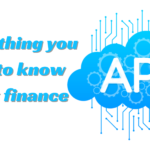Facts About Blockchain: What Is It, How It Operates, and How It Can Be Used
In part because of its secure record-keeping features, blockchain technology has generated considerable interest in the banking sector. But what is it, precisely, and how does it affect you? Imagine a safe and secure society, free of fraud and cybercrime. In other words, imagine a future where time-consuming paperwork and documentation are unnecessary. In an increasingly digitized environment, this paradise is well within our grasp of blockchain.
Blockchain has become shorthand for the increasing importance of trustworthiness and openness in modern transactions. But what makes it so special? And how might being ready to learn about cryptocurrency and blockchain can benefit our daily lives?
Blockchain Explained
The term “blockchain” refers to a new technology that may be considered an unalterable digital ledger. Blockchain’s primary function is that of a digital ledger or record book.
Breaking the term “blockchain” down may help us grasp it better. In its simplest form, a blockchain is merely a long list of blocks. Encrypted data blocks were strung together to build what we know as a blockchain. Since blockchain is an immutable ledger, it doesn’t need third parties to confirm its information is accurate.
These days, distributed ledger technology (DLT), or blockchain, is most often used to record financial transactions. However, data blocks may be utilized to construct a chain of almost any information.
These features distinguish blockchain from conventional record-keeping methods, which may be more vulnerable to inaccuracies and manipulation.
What Makes Blockchain So Vital?
The dissemination of information supports the global economy. More and faster information is a net positive in every aspect of our existence, from business efficiency to awareness of international events. Additionally, the data we are using must be correct.
Blockchain technology can help with this. With a blockchain network, we can monitor a wide variety of processes. This encompasses various operations, from money transfers and shopping to bookkeeping and manufacturing. This establishes fully auditable systems and supply chains.
Because the blockchain system facilitates instant, organized, and transparent information access and dissemination, it can potentially enhance the efficiency and reliability of global supply chains.
Moreover, the information in a blockchain is shareable but may only be viewed by permission network members. This keeps the data safer against hacking and other forms of fraud.
What Is the Function of the Blockchain System?
A blockchain transaction request is broadcast to a distributed network of computers in a peer-to-peer fashion. Next, the nodes, or computers, will employ algorithms to confirm the user’s identity and the transaction’s validity. Doing so may add a new immutable data block to the blockchain.
Blockchain really shines in distributed security, and its genuine value lies here. Many moving parts and prerequisites need to line up for this to occur. A unique hash is generated and logged for each transaction in a blockchain.
As such, a blockchain has the following characteristics:
- Immutable;
- Time-stamped;
- Secure;
- Programmable;
- Distributed;
- Unanimous;
- Anonymous.
What Types of Blockchain Networks Exist?
Every blockchain network operates somewhat differently and can be customized for a particular use case. There are several kinds of blockchain networks: open, closed, permissioned, and consortium.
Public blockchain networks are peer-to-peer networks that almost anybody can join. Bitcoin is one example of a cryptocurrency because anyone can buy Bitcoin. However, public blockchain networks have a reputation for requiring more processing power.
In private blockchain networks, a single entity controls access. In addition to managing the distributed ledger, the organization may deploy blockchain networks inside. It may be utilized to build confidence and trust in certain situations.
Enterprises generally create permissioned blockchain networks to limit who may join and what they can do on the network. In most cases, members will need an invitation or other kind of special access to join.
Consortium blockchain networks are operated and maintained by a group of different companies. The organization restricts participation in the network; however, blockchain management may be delegated.
Final Thoughts
With blockchain technology advancing fast, many wonder what’s next. Expect more sustainability-driven blockchain efforts to offset carbon using less energy-intensive blockchain technologies.
Growth in the creator economy is also predicted, with NFTs and the metaverse idea fueling demand for scarce but valuable digital tokens made possible by blockchain technology. Blockchain’s capacity to build exchanges of transactions between devices, along with its inherent security, makes it an intriguing candidate for addressing many issues plaguing the IoT.


















